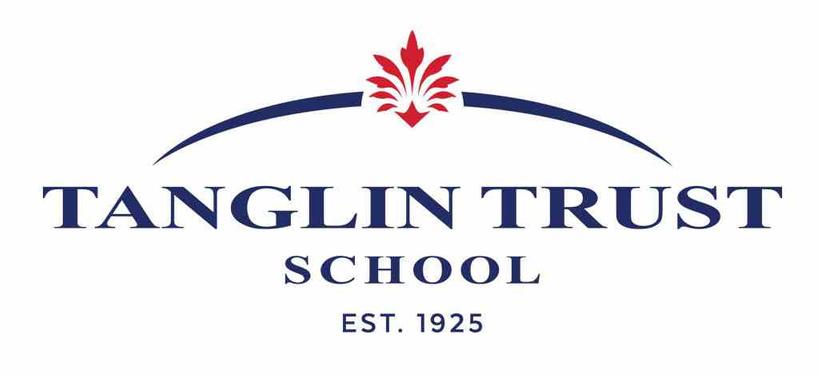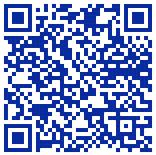Sharing best practice and research from Tanglin Trust School and around the world


RESOURCES
Book Suggestion
A Quiet Education by Jamie Thom (@teachgratitude1)

A fascinating read that champions the voice of the quiet. Thom asks us to consider our school environments and cultures and challenge the extrovert ideal


Future Learning with Open Online Courses



Over the past year, a growing number of people have devoted some of their quarantine time to professional development There are a number of online learning platforms that offer 'massive open online courses' (MOOCs) that are university-affiliated and in many cases, enrolment is free (although you may need to pay for a certificate verifying that you completed the course). Here are some of the leading platforms you can choose from:
Recommended Online CPD


One of the positives for educators experiencing lockdown, has been the huge amount of professional development that have become available online A secondary school teacher, Kate Jones (@loveteachblog, author of Love to Teach and Retrieval Practice), and a primary School teacher, Miss Armstrong (teachpal co uk), have created digital CPD libraries on their websites that are well worth visiting.
Book Suggestion Making Every Lesson Count

series by Shaun Allison (@shaun allison) and Andy Tharby (@atharby)
Drawing on research, the books offer practical advice focusing on six key principles: challenge,

explanation, modelling, practice, feedback and questioning. The book shows how these principles can inspire an ethos of excellence and growth, not only in individual classrooms but across a whole school Other books in the series include: English, maths, science, MFL, geography, history, RE, and primary.
Pass the Pod
Don't Shoot the Deputies by Steve and Russell (@DynamicDeps). This podcast is run by two UK Deputy Head Teachers, and covers a wide range of relevant topics . It regularly includes guest speakers and has an excellent Facebook community.

VOL. 3 | MARCH 2021
Tott
Evidence-Based Practice
Here are some examples across Tanglin where teachers are engaging with research to inform their practice, and trialling new and exciting changes to positively impact student outcomes.
Leveraging Low-Cost Video Production in Private Schools
By Bilal Saddik, Senior Teaching and Learning Assistant (PE), Infant School

What I’m working on
I am currently working on my final year thesis for my BSc (Hons ) in Business and Management and a major part of this research is to investigate how schools can more effectively exploit low-cost video production to enhance remote learning in the context of the pandemic
According to Chappell (2011:3-5) VP has three stages and each stage serves a specific role: Pre-production: is the planning stage of the video content Production: is the recording stage of the video content Post-production: is the editing stage of the video content. An online survey was performed at the school for the current report, in which 26 respondents were recruited voluntarily and anonymously In order to view the topic under discussion through a quantitative as well as qualitative lens, the questionnaire contained both closed and openended questions The charts below show that an overwhelming percentage of the respondents (54%) find video planning difficult, 69% find video recording difficult and 81% find video editing difficult These findings revealed that video production is challenging for some teachers, hence this research is necessary as it will provide recommendations which can make video production less complex and more effective to improve remote learning.
that the use of instructional videos can help to promote knowledge dissemination to students and have a positive effect on their motivation levels
The need for remote learning has now become much greater with the closing of many classrooms (Schleicher, 2020); accordingly, the use of video content to facilitate the continuity of education and learning has also grown However, video production involves specialist skills that may be challenging for educators, especially those without previous experience
Impact on learning
Videos can improve students' learning engagement and offer the potential for instructors to build successful pedagogical strategies (Carmichael, Reid and D Karpicke, 2018 and Cookson, Kim and Hartsell, 2020) There are a variety of ways in which low-cost video production can efficiently make a noticeable difference to teaching and learning
In addition, video's visual advantages offer a platform for increasing access to realistic presentations. Within a number of contexts, the fast development of video instruction is followed by an increasingly diverse range of alternative options available In order to promote effective learning, these options must constitute the most suitable content, design and forum for displaying content, taking into consideration how best to inspire students, increase learning outcomes and even take into account the emotional reactions of students
What I’ve noticed
I have discovered that iMovie, followed by the iPad camera and the teacher`s phone camera (built-in), are the most commonly used video production tools. Most of the respondents listed iMovie again when asked for the best programs for making videos for remote learning
iMovie is a video production application built for iOS and macOS that uses images and videos to create a full storytelling film. It provides a user-friendly interface that helps users (either beginner or tech-savvy) to edit videos in a professional way
produce videos for remote learning. One pivotal question posed was "What are the best practices you have found from your own experience for creating videos for remote learning?" Participants mentioned their best strategies for making remote learning videos, some of which are shared below:
Schedule a video script well ahead to help you feel more confident while filming. Pick the best time of day for the best light while recording
To record and edit videos more efficiently, record in small segments. Keep video simple to clarify the message When filming, look at the camera
You may use an ironing board for the best height if a tripod is not accessible. It is easy to use and merge videos together using quick and easy video editing tools like iMovie
Seeing it in action
In order to understand the best practises for video production to support remote learning, the analysis illustrated the latest video production practises and related data While most teachers use iMovie or the camera on their phone for remote learning content production, they are not happy with the quality of their content Since the study focused on the development of low-cost video, it is recommended that a software called DroidCam could be used to transform Android devices into a webcam (the link to the video can be accessed from the QR code below) It can be used with traditional chat and conference programmes, or with live streaming / broadcast programmes The software operates with a PC client that downloads the drivers for the webcam and links the phone to the device However, the free DroidCam application is only Windows compliant; an alternative for Mac is ‘Iriun’ software and more investigation is currently being conducted into its efficacy
Resources and References

What the research says
Well before the pandemic started, the prominence of video content as a teaching tool was widely adopted following research into its effects on education and learning. A study conducted by Bravo et al (2011) demonstrated
It was estimated that the average length of videos produced ranged from two to five minutes The instructors surveyed experienced considerable difficulties in preparing, capturing and editing the video material for remote learning. In terms of availability of relevant materials at home, enjoyment while making videos for remote learning, confidence of instructors on camera and video quality of current web cams, neutral responses were observed. However, content creators did not

Percentage of respondents who find video production difficult
Applying a Four-Step Constructivist Model to Raise Learning Outcomes
By Kevin Tibble, Integrated Technology Specialist, Junior School

to eight compass points.
What I’m working on Step 1: Follow
Last year, I was fortunate to attend a workshop run by Graham Martin-Brown at the EduTECH Asia 2019 conference In it, he presented a model that described how to blend together the need for discrete skills teaching in an instructional model, with opportunities for applying those skills through a constructivist approach Over the last year, I’ve been experimenting with this model to see if it can improve student outcomes by allowing them to explore and create within a loose scaffold, once they have been given the fundamental skills they need to be successful. The model is described as a “4-Step Constructionist Method for Making”, and describes a linear path through the "making" process. Below, I’ll break down the steps, and describe how I’ve used it in a project using Micro:Bits. These tiny computers are loaded with sensors and LEDs, allowing them to be programed to function as a huge range of different devices
In this stage, all the students are working (either independently or in small groups) on a "platform project" This part of the process is focussed on discrete skills teaching, and is highly instructional The student outcomes are all very similar, and follow a step-by-step sequence This allows students to focus entirely on learning the tools in a structured environment. In Year 6, this part of the project focussed on introducing the Micro:Bit hardware and software, including the block based coding and how to download a program to the device. At the end of the session, students had worked in pairs to program the Micro:Bit to act as a compass capable of directing
Once students have been given direct instruction, they enter a stage of "guided practice" that allows exploration and testing to produce a refined understanding of the skills and tools introduced in stage one In the Micro:Bit project, this was to code and build a timer This activity built on the skills learned in the "Follow" stage, with much of the coding following similar concepts However the majority of the lesson time was given to students to choose and explore a provided extension. These open ended opportunities were differentiated, with students free to choose their own challenge level. The extensions had no instructions, but were based on the same conceptual understanding as the main activity and utilised most of the same tools; while also encouraging exploration of the remaining coding blocks. At the end of this stage, the students finished with products that were fundamentally similar, but with varying degrees of modification This stage was extended through another lesson looking at coding sound outputs


Step 2: Tinker Step 3: Play
The third stage is an opportunity for the students to put their new skills and knowledge into practice They are free to build, explore, invent and problem solve without the structure that existe before In Year 6, the students were challenged to work in pairs to code an electronic pet, similar to a Tamagotchi and then craft a body for it from recycled materials. While they were given a scaffold to start their code, the learning from the first sessions was the primary reference, and they were encouraged to reflect and adapt to fit this new context. Over the last few weeks, the students have been coding and creating their electronic pets, and the results, as predicted in the model, are wildly different both in terms of th coding and the bodies themselves Wit very little in the way of direct instructions, they have been forced to think creatively to solve problems in both the software and hardware aspec of their models, and to take risks
using new coding techniques and tools such as craft knives and hole punches to achieve success.
Step 4: Share
Graham Martin Brown describes this last part of the process as one that is often overlooked, and I feel it is an area that I want to develop in my own practice Inviting students to present their projects to each other, either formally or through a gallery walk, forces them to critically analyse their own project, and seek constructive feedback from others It also provides opportunities to inspire, and be inspired by others. Looking at how other groups have used different methods to achieve the same goals has been eye-opening.
I’ve found the four-step model to be extremely successful, promoting resilience and allowing students to demonstrate a solid understanding of the concepts behind the lessons. The journey from direct instruction to open-ended project is both engaging, challenging and comprehensive, providing a solid foundation, play-based learning and critical analysis
Applying Research to Inform Assessment Practice
By Rob Gulston, Head of History and Politics, Senior School

What I’m working on
information and therefore it is much better to have lots of little sub-tasks than the tendency to do only large tasks that only give what he calls a "best-fit-to-a-level". Therefore, we are challenged in our practise to see that it is better to build up an assessment of students through a frequent variety of different task that assess different constructs These Multiple Inadequate Glances (MIGs) then transform into a very holistic appreciation of the students' overall attainment and engagement
the range of skills and knowledge they have demonstrated
What I've noticed
How The Tanglin Library Can Support Your CPD
MAD SCUBA? People tend to have a love/ hate relationship with acronyms and these are my two favourite ones. Of course, the pub quiz fraternity/sorority will know that SCUBA is Self-Contained Underwater Breathing Apparatus, so effective in saying what it is. Perhaps more obscure, unless you are a history teacher like me, is MAD Mutually Assured Destruction A Cold War term for the perilous situation we might have been in, should the Soviets or Americans launched their huge arsenals of nuclear missiles at each other during the 1960s and 70s However, I now have a new favourite acronym and that is MIGs, or Multiple Inadequate Glances. Along with a handful of colleagues, I was introduced to MIGs on the Assessment Lead Course by Evidence Based Education, which Anna Dunn, Clare Buckland, Claire Russell, Pierre Dawson, and myself recently completed Essentially it is a (fantastic) course that engages you to study multifaceted aspects of assessment, break it down to the absolute bare bones, to reflect on what makes it effective and then put that into action The foundation of the whole experience is to realise that assessment is effective teaching and learning, not a stand-alone, bolton thing that we do to students every now and then As an experienced teacher, I realised that I was quite ignorant about this key feature of our profession and it has therefore proved to be quite transformational Dylan Wiliam states that learning takes place when you get the right combination of epistemology (what it means to know), pedagogy (how to get learners to know) and curriculum philosophy (what things learners should know). The course forces you to engage meaningfully with those three considerations and I would say that MIGs are a most important vehicle for translating them into practise.
What the research says
The research says that there is a tendency for traditional forms of assessment NOT to be very effective according to the four pillars of good assessment (purpose, validity, reliability and value).
Professor Rob Coe highlights how assessments provide us with bits of
In Teaching History (March 2020), Michael Taylor picks up on the fairly familiar rhetoric that you don't train for a marathon by running marathons You build up to it through a series, of robust training exercises, designed to create the requisite overall ability to meet the challenge at the end For us in History and Politics, the end game (in Year 13) is being able to construct effective essays But there are many constituent parts to an essay, such as recall of knowledge, understanding of the question and its concepts, analysis of key terms, construction of complicated written response including specific subject specific terminology, construction of a justified argument (ie supporting claims and challenging with counter claims) and finally appreciating the different interpretations of others who have written about the events Our practise has been to challenge students with the closest thing to an essay as early as possible, with all the best intentions However, this is unfortunately a case of construct irrelevant variance. Stuart Kime explains that it is therefore better if you identify very clearly what the key construct of your assessment is first and then create an assessment that reliably assesses that and that alone, not a range of additional things, which leave many students struggling.
Impact on Learning
We decided to trial this learning approach with our whole Key Stage 3 curriculum and therefore we will adapt all our assessments as we go along this year It has meant that each lead teacher (Rachel Grover, Claire Thompson and I) has, in effect, deconstructed the assessments we used to do into the relevant constructs The resultant assessments have become formative, have more impact and are much less stressful The early signs are that students are producing generally better combined work across these assessments and are less aware that they are being '"tested", as they would have put it before They complete between four and six less onerous tasks and can then reflect on
Apart from the above (which is hugely important), staff have generally been very receptive and positive. Several have commented on the better responses from students, as well as the level of engagement within the lessonscompared to a "silent test situation". Additionally, the MIGs can be easier to mark By creating Multiple Choice Quizzes/Questions for the knowledge recall and utilising Microsoft Forms as a platform, the marking is done for you and the assessment and analysis and therefore response is easy and immediate and efficient. This has also been more effective as it avoids the construct irrelevant variance discussed previously As an example of a specific construct, in our subject the conclusions of Dan Willingham are very pertinent; that knowing facts is an undeniable bedrock of being able to progress further into higher order learning We have tended to assume or expect that knowledge of facts is easy to do, perhaps unfairly By utilising MIGs it has become a construct that we assess and provides a vital platform for the next construct, such as sentence structure and language, MCQs have been a relatively simple and effective tool in developing this aspect of our teaching Likewise, the written sections of old assessments are broken down into smaller tasks which are easier to mark and mean that the teacher gains more frequent and therefore effective knowledge of the students' learning. We might look at content paragraphs and conclusions separately, building them up with specific focus on the different constructs involved. By the end of the process, students have written a very effective piece of writing without feeling that they have had the pressure of a big preparation or a big piece of writing to do, under pressure of time It is also translating into how we approach similar tasks at KS4-5 as well and this will develop into the future.
Seeing it in action
MIGs may be small in stature, but they are powerful. Think of them as the Tasmanian Devils of the educational pedagogical world Not everyone likes them, they look and sound strange at first sight, but in no time, you grow to appreciate them; and no-one ever doubts their strength and effectiveness




















